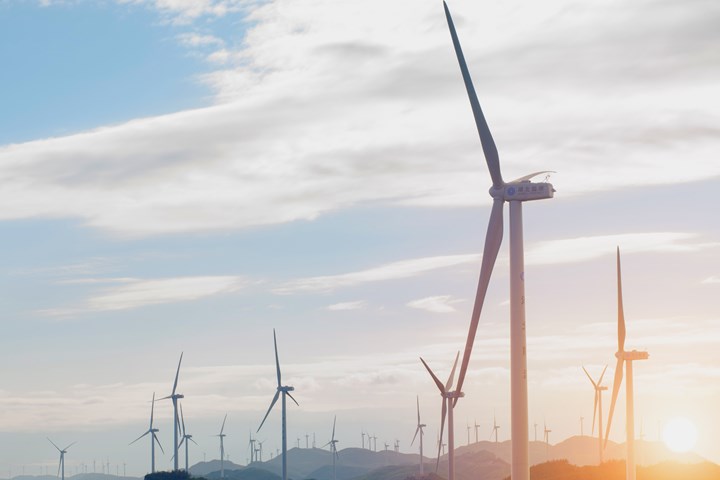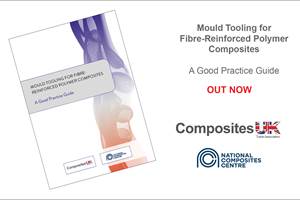TPI Composites announces second quarter 2020 earnings results
Returning to pre-COVID capacity levels, the company has extended two supply agreements and added production lines, adding approximately $800 million of potential contract value.

TPI Composites, Inc. (Scottsdale, Ariz., U.S.), the only independent manufacturer of composite wind blades with a global footprint, reported on August 6 its financial results for the second quarter which ended June 30, 2020.
“We delivered good financial results in the second quarter, growing net sales 13% amidst a challenging operating environment impacted by the COVID-19 pandemic,” says Bill Siwek, president and CEO of TPI Composites. “As of today, all of our manufacturing facilities have returned to pre-COVID-19 capacity levels. We believe this positions us well for a strong second half of the year given the strong demand we are seeing from our customers.”
Amidst the quarterly report financial results, the company also extended two supply agreements with General Electric (GE; Boston, Mass., U.S.), including one in Iowa through 2021 with an option to extend through 2022 and one in Juarez, Mexico through 2022. TPI Composites says it will also be adding another production line in Mexico to provide for GE’s wind turbine technologies in North America. Further, the company has signed a multi-year agreement with Nordex SE (Hamburg, Germany) for two manufacturing lines in TPI’s Chennai, India manufacturing facility, where the company plan to start production in the first quarter next year. These new manufacturing lines and extensions of contracts have added approximately $800 million of potential contract value.
Siwek also says the company continues to invest in its team by adding talented professionals with diverse backgrounds. A recent hire, Jim Hilderhoff, with a background at Wabtec Corp. (Wilmerding, Penn., U.S.) and GE, became TPI’s Chief Commercial Officer (CCO), responsible for all commercial activities.
He further notes that TPI Composites has remained nimble from a capital structure standpoint. The company completed an amendment to its debt facility which has given it the additional flexibility as the company navigate through the dynamic macro environment. Its liquidity at the end of the quarter was $138.4 million, composed of $96.7 million of cash and cash equivalents and approximately $41.7 million of total availability under various debt facilities.
“While we believe we have executed well while navigating the COVID-19 pandemic with all of our plants currently operating at or above planned capacity, several of our manufacturing facilities, in particular Mexico and India, are operating in regions with high levels of reported COVID-19-positive cases. As such, we may be required to reinstate temporary production suspensions or volume reductions at these manufacturing facilities or at our other manufacturing facilities to the extent there is a significant resurgence of COVID-19 cases in the regions where we operate or there is an outbreak of COVID-19 cases in any of our manufacturing facilities. Due to the fluid nature of COVID-19 and the potential impact on our business we will not be providing 2020 guidance at this time.
Siwek adds: “In closing, the hard work and tireless efforts of our associates allowed us to deal with COVID-19 over the last few months have enabled us to reach pre-COVID capacity levels. I want to thank each associate for their dedication in these trying times. We remain encouraged by the growth opportunities and runway in both the wind and transportation markets and look forward to creating value for our shareholders for years to come.”
For second quarter financial results, view the full report here.
Related Content
Inha University incorporates SwiftComp simulation software to virtually test composites
AnalySwift’s SwiftComp tool aims to mitigate the burden of costly experiments and enable accurate testing of woven and braided composite structures.
Read MoreNew online training course targets prepreg basics
JEC World 2024: Composites Expert highlights how its E-Learning Composites Academy platform supports flexible industry learning with new courses developed with Stelia Aerospace North America.
Read MoreChemnitz University of Technology receives €6 million to expand research into "green" carbon fiber
Carbon LabFactory and InnoCarbEnergy project conduct R&D across entire value chain from raw materials through processes to structures and systems on a pilot line with technology demonstrators.
Read MoreComposites UK launches best practice guide for composites tooling
“Mould Tooling for Fibre-Reinforced Polymer Composites” is latest in Composites UK’s series of good practice guides, available online for free.
Read MoreRead Next
VIDEO: High-volume processing for fiberglass components
Cannon Ergos, a company specializing in high-ton presses and equipment for composites fabrication and plastics processing, displayed automotive and industrial components at CAMX 2024.
Read MorePlant tour: Daher Shap’in TechCenter and composites production plant, Saint-Aignan-de-Grandlieu, France
Co-located R&D and production advance OOA thermosets, thermoplastics, welding, recycling and digital technologies for faster processing and certification of lighter, more sustainable composites.
Read MoreAll-recycled, needle-punched nonwoven CFRP slashes carbon footprint of Formula 2 seat
Dallara and Tenowo collaborate to produce a race-ready Formula 2 seat using recycled carbon fiber, reducing CO2 emissions by 97.5% compared to virgin materials.
Read More
























